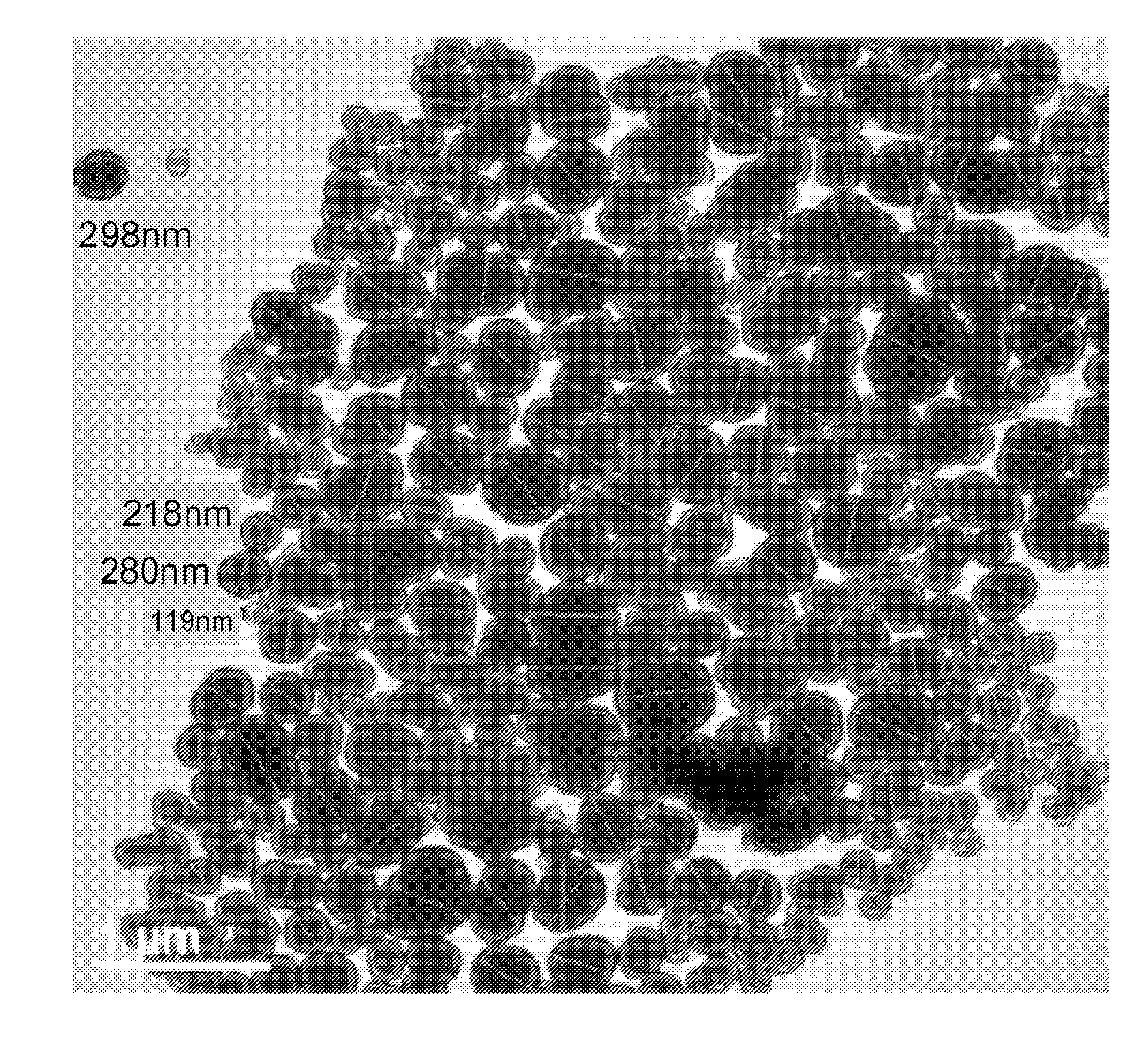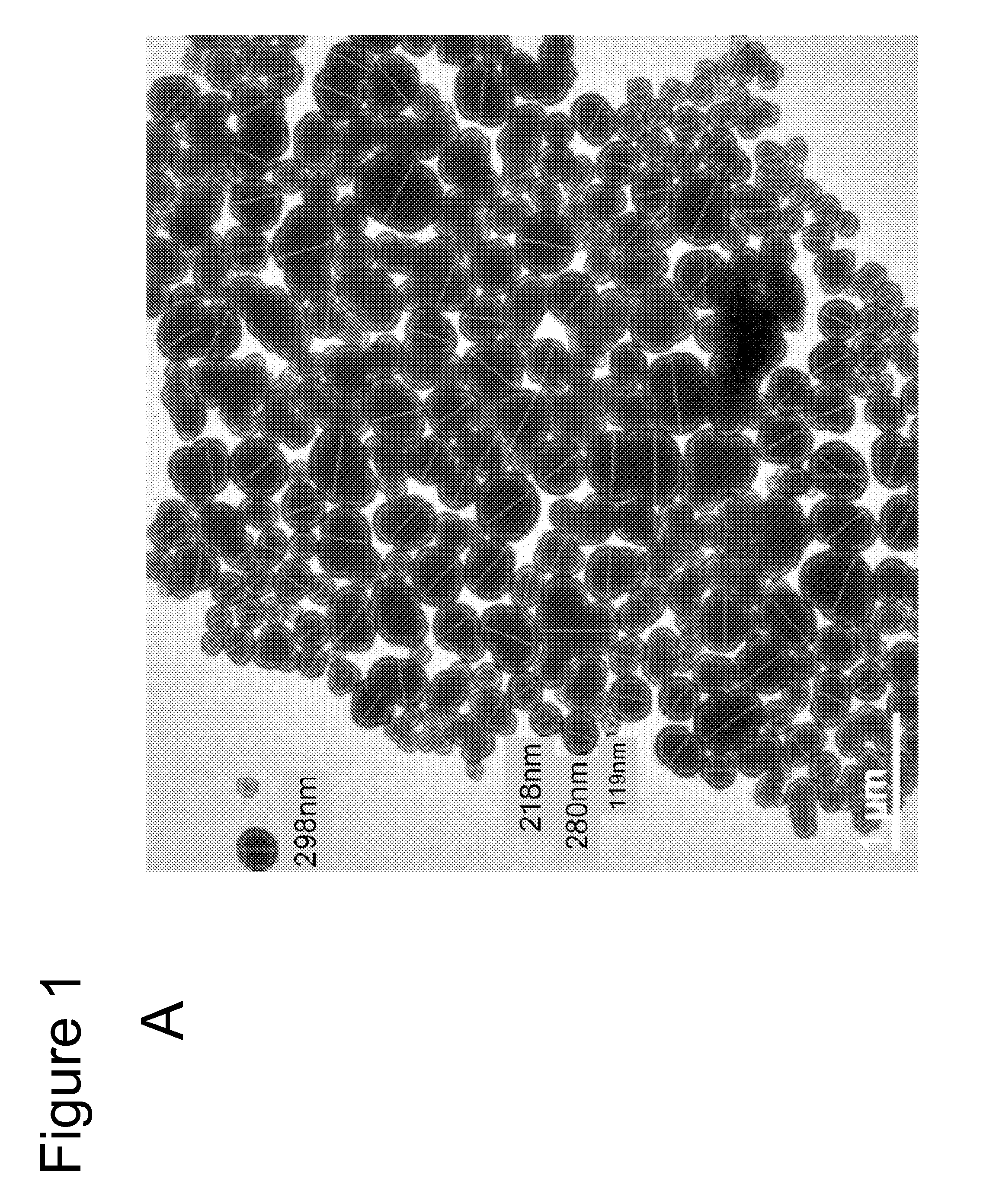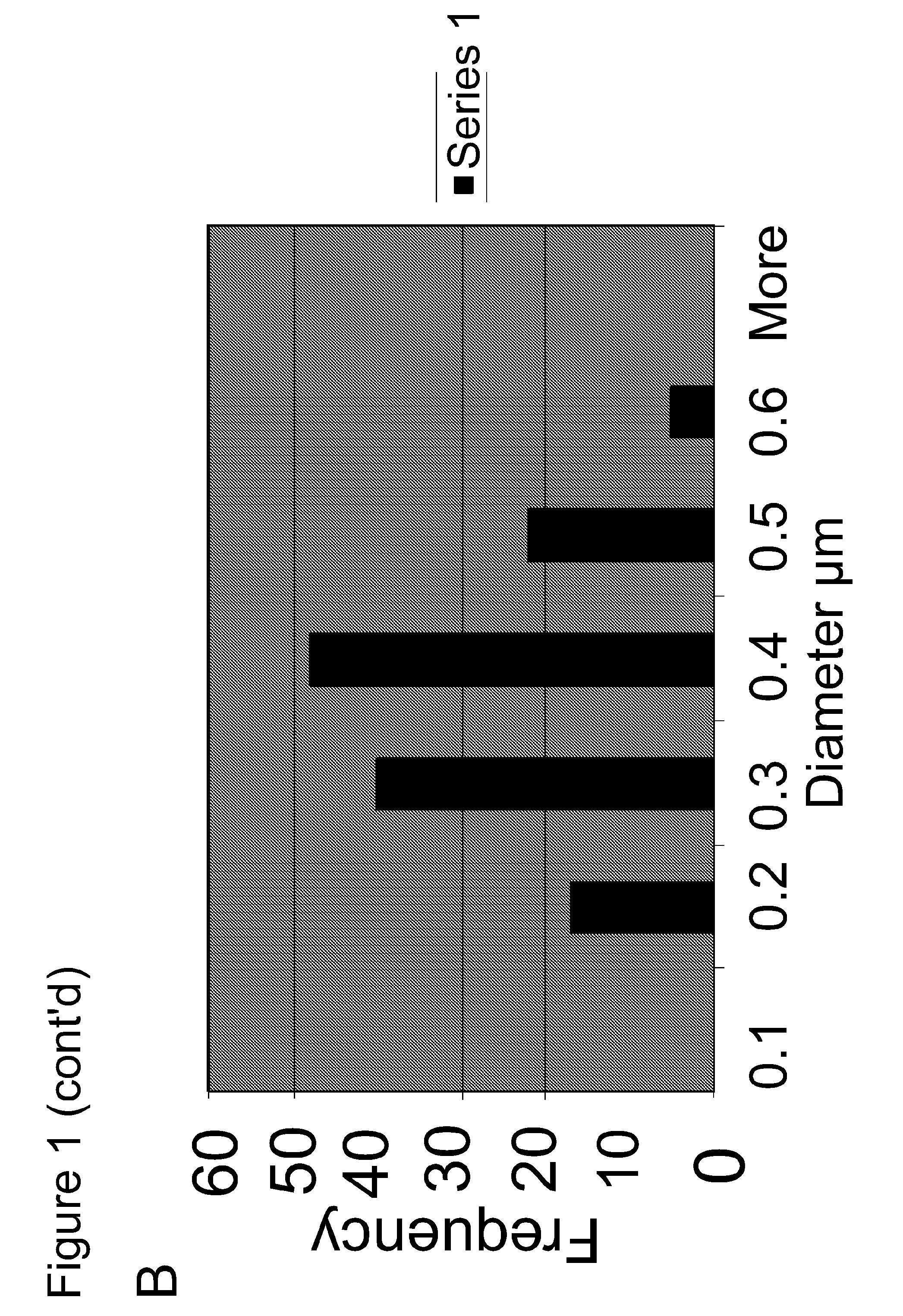Primary carbon nanoparticles
- Summary
- Abstract
- Description
- Claims
- Application Information
AI Technical Summary
Benefits of technology
Problems solved by technology
Method used
Image
Examples
example 1
Carbon Oxidation
[0046]5 g of carbon (AROSPERSE 15) was transferred into a 40 mL glass vial. 7 mL of water was added and the temperature was maintained at 85° C. in a water bath. 3 mL of 30% hydrogen peroxide was added, followed by 200 μL of 16M nitric acid. The reaction was kept at 85° C. for 5 hours after which 350 mg of sodium bicarbonate was added in to the solution to neutralize the remaining acid. The sample was then transferred into 50 mL polypropylene tubes and washed 3 times by centrifugation at 5000 rpm and resuspended in water. The pellet was transferred into a glass vial and dried for three days in a 60° C. oven. 4.9 grams of black chalky material was recovered.
example 2
Primary Carbon Nanoparticle Characterization
[0047]Experiments were performed during development of embodiments of the present invention to analyze the composition of primary carbon nanoparticles by X-ray photoelectron spectroscopy (XPS). Composition analysis revealed that the commercially available SP15 has a carbon:oxygen ration that falls in between SP-4 and SP-100 (two previously used carbon blacks with smaller particle sizes of 25 nm and 56 nm, respectively). However, upon further oxidation via hydrogen peroxide (using the oxidation method described in U.S. Pat. No. 6,120,594), SP15-O CIGHT exhibits the highest oxygen content (e.g. carbon:oxygen ratio of 11.5:1 or greater (e.g. 11.9:1)). Detectable amounts of Silicon were also identified in the both Sp-15 samples using the XPS method before and after oxidation (C:O:Si=11.9:1:0.16). In some embodiments, the source of the silicon is the furnace brick used in the production of carbon black and or thermal black by certain production...
example 3
Characterization of Primary Carbon Nanoparticles
[0055]Experiments were conducted during development of embodiments of the present invention to characterize primary carbon nanoparticles produced by methods of the present invention (e.g. peroxide / acid / base method). XPS measurements, performed on an Omicron ESCAprobe with Al Kalpha X-ray, demonstrated the the elements C, O, Si, and Na were present in the nanoparticles. The ratio of the elements was C:O:Si:Na=11.5:1:0.008:0.018. Although the present invention is not limited to any particular mechanism of action and an understanding of the mechanism of action is not necessary to practice the present invention, it is contemplated that traces of sodium are derived from the base quencher, and silicon comes from the furnace brick that is used in the thermal black manufacturing process.
PUM
| Property | Measurement | Unit |
|---|---|---|
| Temperature | aaaaa | aaaaa |
| Temperature | aaaaa | aaaaa |
| Diameter | aaaaa | aaaaa |
Abstract
Description
Claims
Application Information
 Login to View More
Login to View More - R&D
- Intellectual Property
- Life Sciences
- Materials
- Tech Scout
- Unparalleled Data Quality
- Higher Quality Content
- 60% Fewer Hallucinations
Browse by: Latest US Patents, China's latest patents, Technical Efficacy Thesaurus, Application Domain, Technology Topic, Popular Technical Reports.
© 2025 PatSnap. All rights reserved.Legal|Privacy policy|Modern Slavery Act Transparency Statement|Sitemap|About US| Contact US: help@patsnap.com



